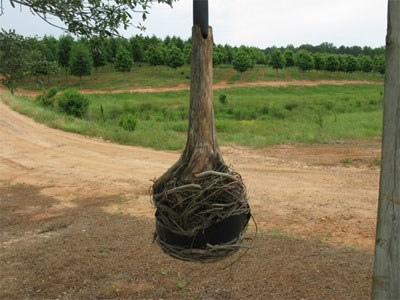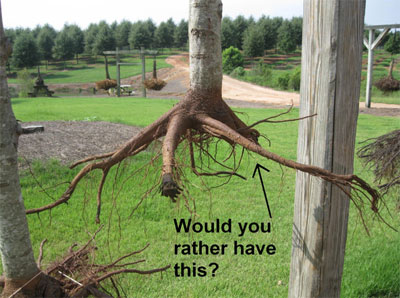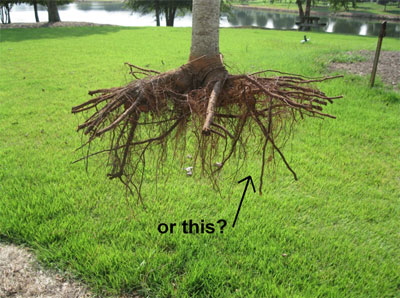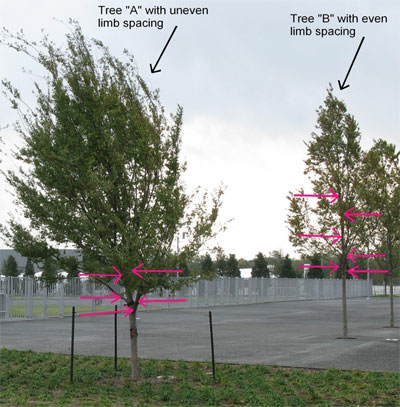Texas Tree Tips – October, 2010
Sustainable Tree Planting
Sustainability has many definitions. To the arborist, naturalist, and gardener, it means that we do not use a resource to the point that it has a negative consequence on future generations’ abilities to use the same resource. When applied to trees, sustainability means tree removals are a last resort. Sustainability also means that proper selection, placement, and care are required to ensure that trees will live to their full potential, providing the maximum benefits for future generations.
In a sustainable tree-planting project, trees not only survive, but also grow stronger limbs and live to the normal life expectancy for the species.
Sustainable tree planting projects include:
• Researching a particular species and its growth habit before you determine a tree’s location. A large-growing oak does not belong over a swimming pool, because it drops acorns, leaves, and flowers (some call them tassels) in the pool. Also, consider the future growth of nearby trees before selecting a location. Trees without adequate sunlight for the species do not develop to their full potential.
• Ensuring a tree will have adequate root space and a healthy soil. Trees surrounded by concrete survive around 20 years, and trees surrounded by organic matter can live to their full life expectancy.
• Selecting quality trees with a proper-sized root ball, a strong branching habit, and healthy foliage (or healthy buds in the dormant season). A tree growing in a nursery container that is too small is not sustainable. A 6- or 8-foot-tall tree growing in a 5-gallon container likely has circling roots inside the container and will require staking to become established. If circling roots are not properly pruned during the planting process, they continue to grow in a circular pattern, leaving the tree without adequate support. Staking is necessary to prevent the tree from blowing over. As a rule, a root ball or container should be at least 10 to 12 inches wide for each inch in trunk caliper.

All photos by Select Trees: www.selecttrees.com.
Even if the girdling (circling) roots of this bald cypress were cut during the planting process as required, the root system would never offer the support required for the growth above ground.
Few nursery growers consistently produce trees with a strong branching habit, because removing a limb with a weak branching habit often leaves a hole in the outer foliage, making it less aesthetically pleasing. Appropriate pruning results in a tree that has proper spacing between limbs rather than a tree that is thick and bushy.
Lace Bark Elm “A” has multiple leaders (or limbs) competing against each other and no central leader (or limb). This elm is more likely to suffer from premature limb failure (or breakage) long before it reaches its life expectancy, making it a less sustainable choice. Lace Bark Elm “B” has evenly spaced limbs along a strong central leader (or limb) in the center. This offers a stronger branching habit, which greatly reduces odds of limb failure before reaching life expectancy, making this tree a more sustainable choice.
Quality growers also root prune their trees to ensure thick, dense roots, which greatly increases the odds of survival.


• Providing sufficient maintenance during the establishment period. Proper maintenance is critical for a minimum of five years for newly planted trees up to 1.5 inches caliper, and three years for trees between 2 and 4 inches caliper — unless we experience a drought. If you are going to plant it, make sure it survives … or the squirrels will curse you!
The person who cares about sustaining tree health and longevity leaves a precious gift for future generations to enjoy.
About the author: Steve Houser is a Dallas native with more than 30 years of experience as a consulting arborist. He is the president of Arborilogical Services Inc., “The Experts Your Trees Deserve.” www.arborilogical.com.

